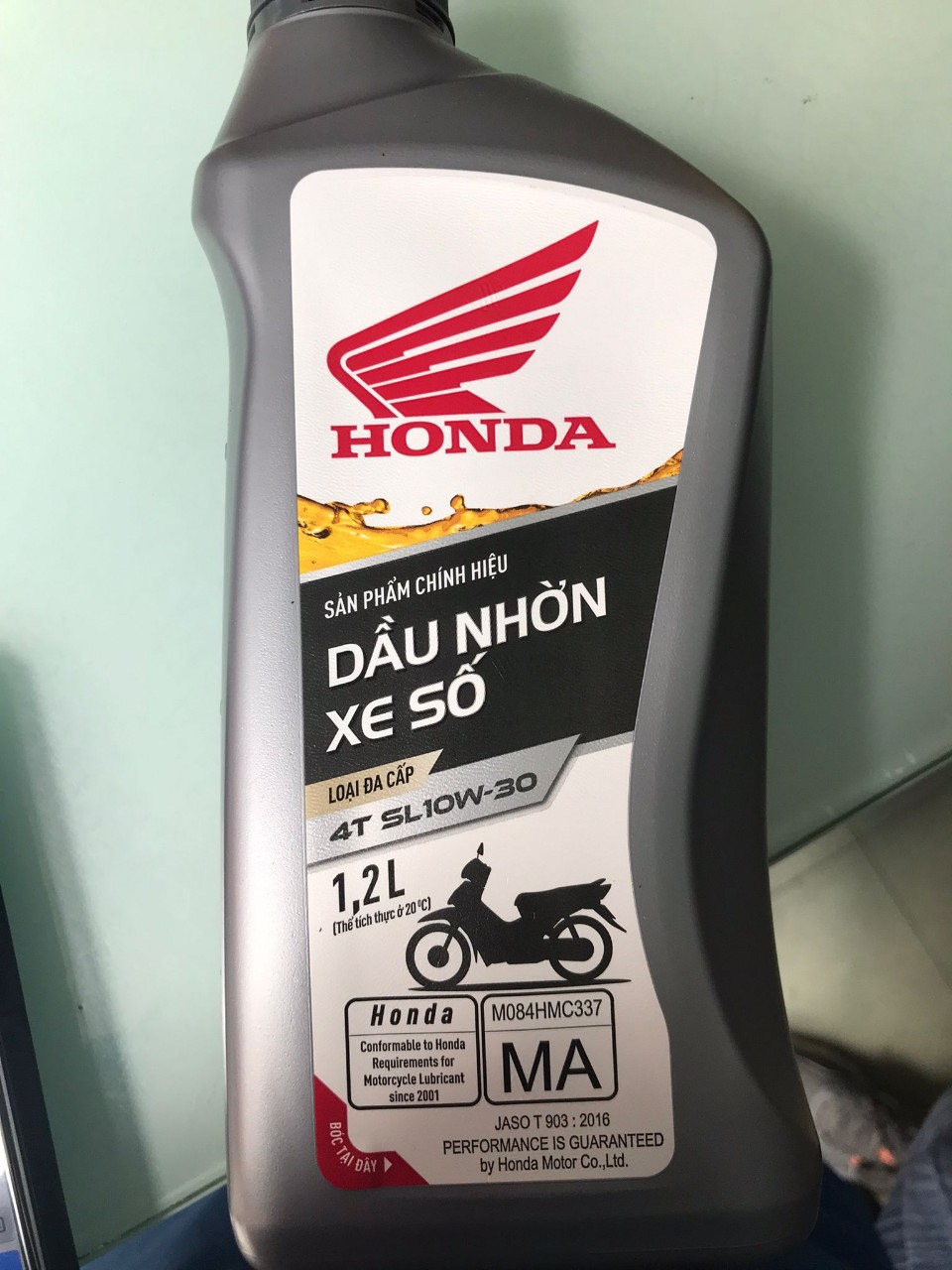What is Engine oil? why do you need to change engine oil?
Description
Lubricants or lubricants are an additive to machinery. They are responsible for lubricating and protecting the engine.The composition of lubricants includes base oils and additives such as anti-rust agents, anti-air bubbles, anti-corrosion agents, etc.
Depending on the type of vehicle and the manufacturer, people produce different lubricant products.
But this is considered one of the most important products for machine equipment when operating.
1 What is Engine oil?
Easier to understand: lubricants consist of ORIGINAL OIL and ADDITIVES. “Normally, the additive content is 0.01-5%”.
=> Base oil accounts for 95% - 99.9%
1.1 WHAT IS ORIGINAL OIL?
Base oil is the oil obtained after processing, synthetic treatment by physical and chemical treatment processes. Conventional base oils include 3 types: vegetable oil, mineral oil and synthetic oil.
- Vegetable oils are only used in some special cases. It is mainly mixed with mineral oil or synthetic oil to achieve certain functions. But today people often use mineral oil or synthetic oil mainly. With superior properties such as low cost, diversified and abundant products, mineral oil has occupied an important position in the field of lubricant production, but synthetic oil is also interested in because of its superior properties. It"
- Currently, when it comes to base oil, people will immediately think of mineral base oil and synthetic base oil.
- Base oils are further divided into three categories in descending order of quality: synthetic base oil, semi-synthetic base oil, and mineral base oil.
2.2. MAJOR OIL GROUPS
Group I base oils: manufactured with solvent processes, with a sulfur content >0.03% (300 ppm), parrafinic composition; napthenic (open-chain structure or saturated ring) is less than 90%. Thus, the aromatic component (unsaturated ring) is allowed to be more than 10%, but for this oil, the aromatic component is only 1-2%. Viscosity index is from 80-120, but the most common today is 100 +/-2 depending on the segment.
Group II base oil: produced in addition to solvent treatment with additional hydrogen treatment, so now: sulfur content <0.01% (usually 20-40 ppm) aromatic content <1% (100 ppm) , viscosity index from 105-115.
Group III base oils: produced in addition to solvent treatment with additional hydrogen cracking treatment, so the viscosity index is very high (about 120-135), no sulfur and aromatics are detected. But the disadvantage is that the Kinematic Viscosity (at 100 degrees C and 40 degrees C) is very low.
Group IV base oil: or PAO base oil (Poly AlphaOlefine) is a fully synthetic base oil. Fully synthetic base oils have very advanced properties such as: very high viscosity index (>145), no sulfur or aromatics.
Group V base oil: is different from the above but is synthesized such as: ester, di-ester, poly butene poly alpha glycol ... with very high quality: very high viscosity index, thermal stability...
Base oils with low sulfur content and low aromatics are very stable to oxidation and heat.
2.3. CLASSIFICATION OF ORIGINAL OIL IN THE MANUFACTURING OF Lubricants
- Due to the limitation of group I base oils, people added group III base oils to increase oxidation resistance and more importantly limit the volatility of engine oils. That's why people mix about 30% of Group I base oils to create Semi-synthetic/Synthetic based lubricants.
- Currently, before the trend of using fuel-saving oils, manufacturers often use group II and group III base oils to prepare engine oils. These oils usually have low viscosity: 5W-XX, 10W-XX or 0W-XX, so companies often advertise as Synthetic Oil.
- Currently, the trend of base oil manufacturers is to switch to group II and III base oil production, so the supply of Group I oil is not as abundant as before. The price of Group II base oil is nearly equivalent to Group I base oil, Group III is higher than Group II and Group I about 4,000 VND/liter.
- Meanwhile, a mineral-based "synthetic oil" on the market will be about 80,000 VND/liter higher than the mineral engine oil (20 times). Group II base oils blended with engine oils (viscosity index about 115) are currently in abundant supply and are also inflated as "Semi-synthetic".
2.4. EFFECT OF BASE OIL ON QUALITY OF FINISHED LUBRICINE
Effect of base oil on the quality of the finished lubricant:
- Mineral oil (Mineral): mineral oil is separated from crude oil through petrochemical refining process; has low production cost and medium quality.
- Fully synthetic base oil: Synthetic oil is prepared from synthesis (through chemical and physical processing); components of hydrocarbons from crude oil or other materials. ADVANTAGES: wide operating temperature range, extended oil change intervals; Less consumption and better engine protection but high production cost.
- Semi-synthetic base oil: Semi-synthetic oil has a mixture of mineral oil and synthetic oil (accounting for about 10%); Reasonable production cost for relatively good quality.
3. BASIC COMPOSITION OF LUBRICATION OIL
For a long time, we often use lubricants, but rarely pay attention to the components in the oil. So let's find out what the lubricants are like and what determines the quality of the lubricant.
Most lubricants on the market today are made from base oils and additives. Which includes base oil (usually accounts for 70-90% of the volume of the finished oil) and the rest are additives.
Based on the composition of the base oil, we can divide the lubricating oil into 3 types:
1. Mineral base oil
Mineral oil is separated from crude oil through petrochemical refining process, has low production cost.
2. Fully synthetic base oil
Synthetic oils are prepared from the synthesis (through chemical or physical treatment) of hydrocarbon components from crude oil or other materials. ADVANTAGES: wide operating temperature range, extended oil change intervals, less consumption and better engine protection, but high production costs.
3. Semi-synthetic base oil
Semi-synthetic oil has a mixture of mineral and synthetic oils (accounting for about 10%), reasonable production costs for relatively good quality.
Additives in lubricants usually account for about 10-30% of the finished oil. The main additives include:
1. Viscosity Index Improvement Additive
are polymers (only in multigrade lubricants) that help the oil operate in different temperature conditions.
2. Antioxidant additives
slow down the oxidation process, overcome the burning of the ring, reduce the corrosion of parts and create deposits...
3. Anti-wear additive
increase adhesion on metal surfaces to reduce friction during engine operation.
4. Detergent additive
Prevents and eliminates oil-insoluble deposits, deposits, carbon and lead compounds in internal combustion engine parts...
5. Dispersion additive
prevent retardation of deposit formation and deposition under low temperature conditions.
6. Corrosion Inhibitor Additives
reduces the formation of organic peroxides, acids and other oxidizing components that degrade engine oil.
7. Additives denaturing, reducing friction
increase the strength of the oil film, keep the metal surface separate, prevent the oil layer from being damaged under high load or high temperature conditions.
8. Rust inhibitor
Prevents rust when the engine stops working for a long time.
9. Additives that lower the pour point
At low temperatures, the fluidity of the oil will decrease, so the pour point lowering additive is to lower the freezing point of the oil.
10. Foaming Inhibitor Additives
- Foam due to strong air mixing into the oil adversely affects the lubricating properties, increases their oxidation, prevents the circulation of the oil, causing inadequate lubrication. To avoid foaming, anti-foam additives are used.
4. BASIC SPECIFICATIONS AND STANDARDS OF Lubricants
Experts give the basic standards of lubricants including 3 main standards: API standard, JASO standard, ACEA standard, SAE viscosity.
4.1. WHAT ARE API STANDARDS?
“API (short for American Petroleum Institute) is the American petroleum association. The API performance level is also equivalent to the European ACEA standard. Is the classification of lubricant quality of the American Petroleum Association.
The quality level of API for gasoline engines is SA, SB, SC, SE, SF, SG, ... to the latest level is API SN.
API quality level for diesel engines denoted CA, CB, CC, CD, ... to the latest level is CK.
In which the last letter is used to distinguish the levels and is arranged in alphabetical order, the later the letter represents the higher level. For example, API grade SN is higher than SM; SM is higher than SL.”
Important note: Absolutely here you should not misunderstand that any oil with the letter SN printed on it is the best product, why?
=> Because the quality of lubricant depends mainly on the quality of the ORIGINAL OIL (95%-99.9%)
For example:
Just like your phone API index is Android operating system, Base oil is the phone's hardware.
You can't conclude that a computer running Android 9 is better than a phone running Android 7. Mainly how the hardware is, how powerful it is to handle the job.
So even if that base oil is a mineral base oil with an API index of SN, it is still not as good as a semi-synthetic base oil with an API of SA or a synthetic base oil with an API of SA.
4.2. WHAT IS JASO STANDARD?
JASO (short for Japanese Automotive Standards Organization) is a Japanese automobile standards certification organization. There are many standards of JASO, but for vehicle 4, CAR is JASO MA, GA is JASO MB, and vehicle 2 is JASO FC.
4.3. WHAT IS SAE Viscosity?
“SAE (short for Society of Automotive Engineers) translates as association of automation engineers, for easy understanding, lubricant companies are associated with Vietnamese for easy remembering as “Viscosity”. Viscosity is divided into two types: single grade and multigrade.
Single grade oil : usually only with symbols SAE 40, SAE 50. Single grade oils are only guaranteed to reach the viscosity at high temperatures required for engine lubrication. When the temperature is low (when the engine is not running), the monograde oil can be too thick, making it difficult to start and circulate the oil to the engine components.”
Multigrade oils: Overcoming the disadvantages of single-grade oils and multi-grade viscous oils such as SAE 10W-30; 15W-40 and 20W-50 are developed and put into use more and more widely. The letter W is said to stand for "Winter" indicating the ability to start when it is cold. Multigrade lubricants both ensure the right viscosity to lubricate the engine well at high temperatures and ensure that the oil is not too thick at low temperatures to make the car easy to start and operate.
The “digit before “W” refers to the temperature range at which the oil helps the engine start well. That temperature is determined by subtracting that number from 30, but it's negative. For example, 20W-50 oil starts well at -10 degrees Celsius. 10W-30 oil starts well at -20C.
Following the letter “W” in a multigrade oil can be a 40, 50 or 60. Usually, the larger the number, the greater the viscosity and vice versa.
In short, the viscosity here is also quite important, so remember that the product you use is multi-grade or single-grade.
If it is a multi-grade oil, it should be remembered that the digit before "W" also indicates the ability to start, the smaller the number, the higher the temperature amplitude helps the car start easily and vice versa.
The larger the digit after the "W", the denser it is, the smaller it is, the thinner it is:
When going on a road trip, you should choose a thicker oil because when you go on a road trip, the engine will be hot and the oil will thin out.
In the city, choose a thinner oil to make it easier to start the car after stopping in front of a traffic light.
4.4. WHAT IS THE ACEA STANDARD?
Classification of engine oils according to European ACEA standards
ACEA (the English name is Association des Constructeurs Europeens d'Automobiles) is an association of European car manufacturers. Similar to API, ACEA also issues quality classification standards for lubricants used in various types of engines.
ACEA standard is a criterion to evaluate the quality of lubricants for gasoline and diesel engines, which is extremely strict on emissions, issued by the European Lubricant Association.
The ACEA quality hierarchy provides more detail on lubricant performance for a particular type of application. Standard A = Gasoline, Standard B = Diesel and Standard C = Compatible with catalytic converters (catalysts help reduce toxic fumes in exhaust gases), standard E = heavy duty diesel engines.
Classification of engine oils according to ACEA standards:
The ACEA standard classification introduced in 1996 has changed many times and now the standard classification system is ACEA 2008, which started in December 2010. Similar to the API standard, the ACEA standard also promulgates quality classification standards for lubricants used in engines. According to the 2008 standard classification:
Explain the meaning of the acea . criterion
4.4.1. ACEA standards of lubricants for gasoline engines
ACEA: A1, A3, A4, A5
4.4.2. ACEA standard of lubricants for light diesel engines
ACEA: B1, B3, B4, B5
Explain:
A1/B1: Fuel economy
A3/B3: High Performance
A4/B4: For direct pump motors
A5: Combination of A1 & A3
B5: Combination of B1 and B3/B4
4.4.3. ACEA standard for light diesel engines equipped with exhaust gas treatment
ACEA: C1, C2 C3, C4
Explain:
These grades indicate catalyst compatibility (low SAPS: ash sulphate, phosphorus and sulfur), specially formulated to extend the life of exhaust gas treatment equipment such as: DPF, TWC, SCR, DOC…
5. USE OF OIL
5.1. USES 1: Lubricating SURFACES
Engine oil forms a thin oil film at the contact surfaces between parts, reducing friction, anti-wear, reducing power loss, preventing engine block.
As a result, the muscle loss in the engine is reduced, and the efficiency is increased. Increased useful efficiency means increased engine economy.
5.2. USAGE 2: CLEANING THE FRUIT SURFACE OF THE DETAILS
On the friction surface, during the working process, there are often metal faces peeling off the surface. Lubricating oil will wash away these metal particles and then be retained in the filter of the lubrication system, preventing the work surface from being scratched. Because when the engine runs through after assembling and repairing, there are still a lot of metal chips left in the assembly and the metal chips in the manufacturing process have surface undulations generated when running, so it must be used. lubricating oil with low viscosity to increase the ability to wash away dirt on the surface.
5.3. USAGE 3: COOLING SOME DETAILS
Due to friction at working surfaces such as Piston - cylinder, crankshaft - bushing... generate heat. On the other hand, some details such as pistons, nozzles, etc. also receive heat from the incoming combustible gas. Therefore, the temperature of some parts is very high, which can damage the normal working conditions of the engine such as breaking, getting stuck, and reducing the durability of the parts. In order to reduce the temperature of these components, oil from the lubricating system with a temperature lower than the part temperature is directed to the high-temperature components to dissipate heat.
5.4. USAGE 4: CLEANING
The lubricating oil forms a thin oil film between the piston and the cylinder wall that seals the combustion chamber, preventing power loss.
5.5. USES 5: ANTI-OXIDITY, ANTI-WOOD
Lubricants form an oil film to protect metal parts from agents such as water, oxidation, etc. thanks to the additives contained in the oil.
5.6. USES 6: SHORT ENGINE RUNING PROCESS
When running the engine, it is necessary to use low-viscosity oil. In addition, the oil is mixed with some special additives that soften the metal microorganism a very thin layer on the surface of the part. Therefore, the details quickly fit together, shortening the time and cost of running.
6. GUIDELINES FOR CHOOSING THE RIGHT OIL
How often do you need to change oil in motorcycle in vietnam
According to my personal research
The type of lubricant produced depends on the climatic environment of each country so that the manufacturer produces a suitable product suitable for that region, for example, the temperature of hot areas, cold areas, mountainous terrain or plain, have many highways or few highways, hot, humid, dusty environments, harsh engine working conditions or not, these are the main reasons for lubricant manufacturers to research and produce a product suitable for that country.
A lot of people do not understand this problem, they often compare the quality of lubricants in their Country with the quality of oil in another country, this is a huge mistake.
For example, in Vietnam, the tropical climate is hot, humid and rainy, and the roads are dusty and the traffic is not clear, so famous car manufacturers such as Honda, Yamaha, and Kawasaki recommend to change the engine oil regularly every 1,500 to 1800 km. use but also these companies in European countries, the temperature is colder, the environment is ventilated, there is less dust, there are many highways, they will recommend changing the engine oil from 2,000km -3000km depending on the weather conditions & depending nation.
By: Gia Hung Motorbike Rental
#engine_oil #Motorbikeoil #motorcycle_oil



